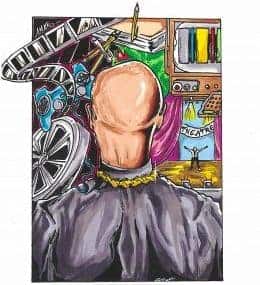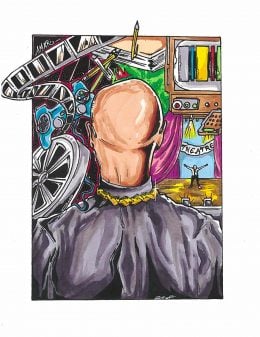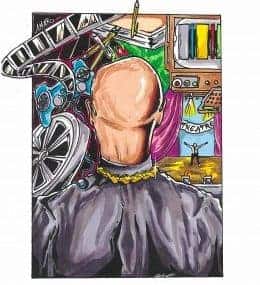The Kingdom of Dreams and Madness – Overview/ Review (with Spoilers)
Overview Within The Kingdom of Dreams and Madness is an insight into all that made Studio Ghibli what it is today. Be it the philosophy and work habits of Hayao Miyazaki, the production process of the studio, or the film giving props to integral members of the studio who not only helped give birth to…

Spoiler Alert: This summary and review contains spoilers.
Additionally, some images and text may include affiliate links, meaning we may earn a commission or receive products if you make a purchase.
Overview
Within The Kingdom of Dreams and Madness is an insight into all that made Studio Ghibli what it is today. Be it the philosophy and work habits of Hayao Miyazaki, the production process of the studio, or the film giving props to integral members of the studio who not only helped give birth to it but keeps it alive.
Review (with Spoilers) – Below
Characters & Story
For more than 35 years, Hayao Miyazaki has made animated films. For a period of time with Toei Animation, and then within his own studio. But his creative genius isn’t the sole factor in his success. It is thanks to his mentor Isao Takahata, also known as Paku; his producer Toshio Suzuki; Sankichi, his right-hand woman; and a slew of other people, both named and unnamed, who dealt with his need for perfection, and put all their efforts in bringing his ideas to life.
Praise
When it comes to movies, especially animation, there aren’t too many names out there which don’t require a Google search to know what productions they are associated with. And when the first name associated with animation maybe Disney, Miyazaki is a very close 2nd, if not equal. So to watch his creative process during the making of The Wind Rises feels like a gift, an extended featurette which covers not just the production side of things, but the personal story behind the film, and all that led up to that film being created.
Diving deeper, what you get out of this film is a true taste of what the film’s title alludes to: The kingdom of dreams and madness. For with Miyazaki being a legend, and undeniably one of the best to ever lift a pencil, undeniably there is more to him than his films. There is his political beliefs, his friendships, his perspectives on the industry, and a handful of other things. All of which make it so that as much as the film speaks on the production of The Wind Rises, at the same time, through archival photos and video, it is about the creation of the studio, a brief history of Miyazaki, Takahata, and Suzuki, and almost like a kiss goodbye from Miyazaki before he decides to dedicate his life to pursuits outside of animation such as working back within the manga realm.
Criticism
Perhaps the main issue this film has is that it truly does feel like an extended featurette turned into a movie. Which is only a negative for it feels like it only gives you a taste of what a full-length Miyazaki, or Studio Ghibli, documentary could offer.
Overall: Worth Seeing
It isn’t often a studio, or creator, like Miyazaki lets the audience into their world as they are creating. Add in that Miyazaki presents his thoughts and philosophies on many subjects, pays homage to those who helped him get to this stage, and provides some insight into his movies, and it makes for perhaps the most engaging documentary I’ve seen in awhile. Hence the Worth Seeing label for as a fan of his studio, and his work, this virtual visit into the Kingdom of Dreams and Madness is a treat to the senses and a reminder of the genius of Miyazaki.
Collected Quote(s)
“Please quit if you: 1. Have no ideas; 2. Always rely on others; 3. Shirk responsibility; 4. Lack enthusiasm.”
— The Kingdom of Dreams and Madness

